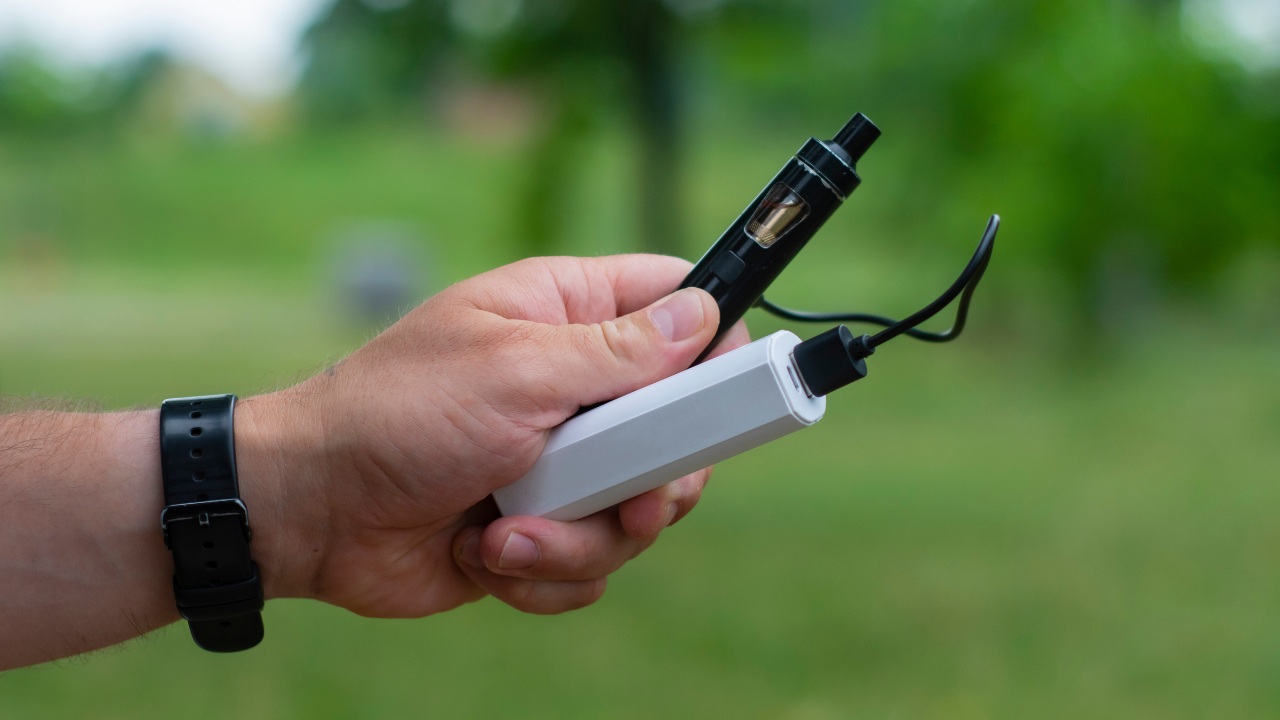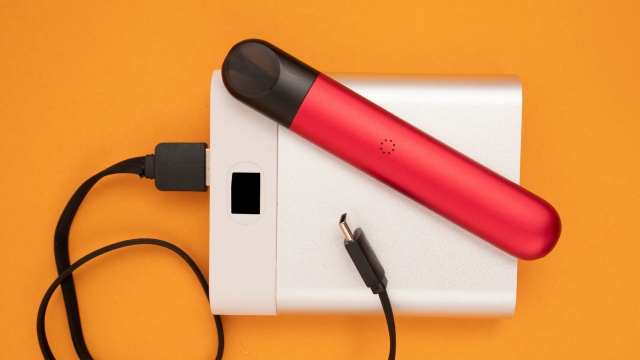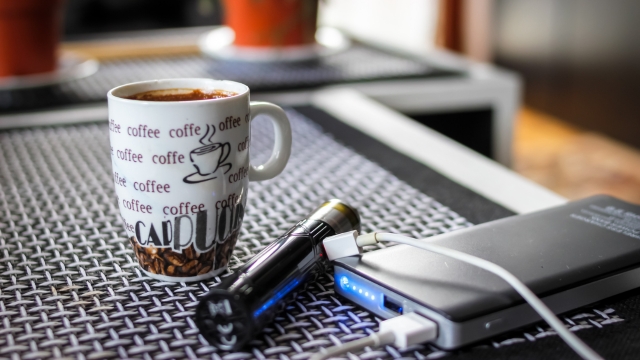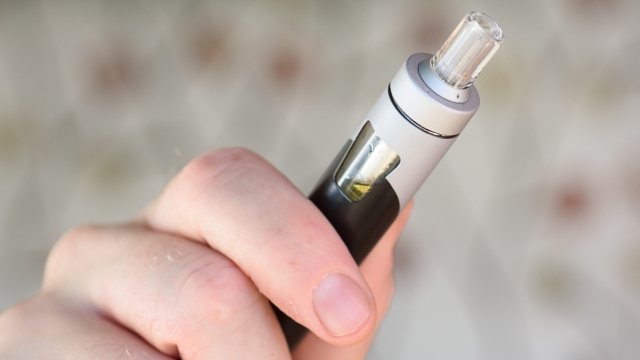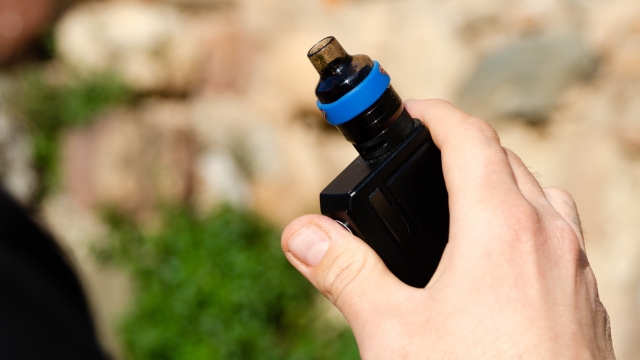Are you intrigued by the world of rechargeable vapes and curious to know more about their battery life, specifically, how long do rechargeable vapes last? With the increasing popularity of vaping, understanding the ins and outs of these devices can be incredibly beneficial.
How long do rechargeable vapes last? The lifespan of a rechargeable vape depends on battery capacity, usage, and maintenance. On average, a fully charged vape can last anywhere from a few hours to a full day, while the device itself can last several months to years with proper care. Regular charging, proper storage, and coil replacements can extend its longevity. If you recharge your vape twice a day, generally your device lasts between 6 months to 2 years, contingent on usage habits and proper maintenance. Lithium-ion batteries typically withstand 300-500 charging cycles before performance decline is noticeable.
Join us as we unveil the secrets to maximizing your vape’s battery life and provide practical advice for regular maintenance, ensuring the best vaping experience possible. Let’s embark on this journey to discover the longevity of rechargeable vapes.
Key Takeaways
- Rechargeable vape pens offer convenience, customizable features, and a long battery life.
- Understanding the components of rechargeable vapes and selecting an informed device is key to maximizing performance.
- Regular maintenance, optimizing charging practices, understanding usage patterns, and adopting good habits are essential for extending the longevity of your vape device.
Introduction – How Long Do Rechargeable Vapes Last
Rechargeable vape pens have garnered significant attention in the vaping world due to their convenience and environmentally friendly nature. They offer a personalized vaping experience with longer battery life compared to disposable vape pen options, making them the preferred choice for many users.
Since the inception of the first commercially successful electronic cigarette in the early 2000s, rechargeable vapes have evolved, providing consumers with customizable batteries, heating elements, and e-liquid options. In contrast, the rechargeable disposable vape offers a unique combination of convenience and reusability.
Notably, their user-friendly design, extended battery duration, and eco-friendly attributes have propelled rechargeable vapes to popularity among users.
Understanding Rechargeable Vapes
Rechargeable vapes consist of rechargeable batteries, an atomizer or coil, and a cartridge or tank containing the vape juice. Additionally, two primary types of vaping devices are available: rechargeable and disposable vapes. Notably, rechargeable devices enable users to refill cartridges, prolong battery life, and replace atomizers or coils when necessary.
The longevity of rechargeable vapes depends on various factors, such as the quality of parts and manufacturing, charging frequency and habits, battery life, device maintenance, and individual vaping habits. Consequently, proper maintenance and care of your device are key to extending its lifespan.
Moreover, combining a rechargeable vape with high-quality cartridges or vape juice can significantly enhance your overall vaping experience.
Components of Rechargeable Vapes
A rechargeable vape pen consists of several components: The battery (vape pen battery) provides the power to heat the oil and produce vapor. Additionally, the atomizer or coil is responsible for heating the oil and turning it into vapor. Furthermore, the cartridge holds the oil or e-liquid that will be vaporized, while the mouthpiece is where you inhale the vapor.
Notably, the industry standard for threading is 510, meaning that 510 vape batteries are specifically designed to accept 510 cartridges.
Types of Rechargeable Vapes
There are various types of rechargeable vaping devices available in the market, including pen-style vapes, box mods and advanced devices, pod systems, and mechanical mods. As for the lifespan of these devices, disposable vape pens tend to have the longest battery life, while 510 rechargeable vape batteries offer numerous dozens or even hundreds of charging cycles.
Remember, device selection is based on user preference; understanding the distinctions between these types assists in deciding the vape that aligns with your needs.
Battery Life and Efficiency
Rechargeable vapes employ lithium-ion batteries, which typically have a lifespan of between 6 months to 2 years. Moreover, the actual runtime of a vape depends on usage habits and the power requirements of the device. Therefore, to optimize battery life and device longevity, it’s essential to follow best practices for charging and maintenance.
Battery Capacity and Charging Cycles
The battery capacity of rechargeable vapes is measured in milliampere-hours (mAh). Particularly, batteries with higher capacities generally provide longer usage before needing to be recharged, offering a more convenient experience for users.
Charging correctly involves connecting the vape to its charging cable and inserting the micro-USB connector into the power plug. Afterward, plug it into a socket and allow the battery to charge until it reaches its maximum capacity.
Moreover, it’s generally accepted that a lithium-ion battery can withstand approximately 300 to 500 charging cycles before a noticeable decrease in performance is observed.
Factors Influencing Battery Longevity
Various factors influence the battery life of rechargeable vapes. These factors include usage patterns, charging practices, temperature considerations, and storage circumstances. For instance, controlling temperature can help increase battery life and protect the heating element from overheating during extended vaping sessions.
Additionally, proper storage conditions are essential. Leaving the device unused for an extended period may cause its batteries to degrade, thereby reducing the device’s operational duration.
Battery Life in Different Vape Types
Battery life varies across different vape types, including vape pens, box mods, and other devices. Specifically, disposable vape pens have the longest battery life, while 510 rechargeable vape batteries with 510 carts offer numerous dozens or even hundreds of charging cycles.
Therefore, the choice of device, combined with proper care and maintenance, can help ensure that users enjoy a long-lasting vaping experience.
Vape Device Types and Characteristics
Vape pens and box mods are two popular types of vaping devices, each offering unique design features and functionalities that cater to different users’ preferences.
Vape Pens
Vape pens, slightly larger than traditional e-cigarettes and pen-shaped vaping devices, feature a cylindrical battery with 510 threading to connect to atomizers. They’re known for their sleek design, discreet appearance, convenience, and low-key vaping experience.
Operating via a battery-operated heating device, they vaporize the liquid in the cartridge or reservoir. This technology involves a battery, atomizer, and mouthpiece.
Box Mods and Advanced Devices
Box mods and advanced devices provide additional customization features and adjustable settings compared to traditional vape pens. Specifically, these devices often include variable wattage control, temperature control, power mode, bypass mode, adjustable power output, and changeable tanks.
Thus, these devices offer a more customizable and personalized vaping experience. As a result, users gain the ability to adjust settings to their own preferences, allowing them to create a unique vaping experience.
Cartridges, Coils, and E-Liquid
Comprehending the complexities of rechargeable vapes requires scrutiny of cartridge types’ variety and compatibility, coil materials’ impact, resistance, and nicotine strength and flavor profiles in e-liquids.
Cartridge Types and Capacities
Cartridges for vape devices are available in various sizes and materials, including glass, plastic, and metal. The capacity of cartridges can range from 150 to 300 draws (puffs), depending on the duration of inhalation and the user.
Coils: Materials, Resistance, and Impact
Vape coils are typically composed of Kanthal, nichrome, and stainless steel. Notably, different coil materials and resistance levels have a considerable influence on the flavor, vapor production, and battery life of the device.
Moreover, regular replacement and maintenance of vape coils are essential for optimal performance. Additionally, such maintenance can help prolong the lifespan of the device.
E-Liquid: Capacity, Types, and User Preference
E-liquids play a crucial role in shaping the vaping experience. In particular, nicotine strength and flavor profiles significantly influence user preferences and device usage. For instance, commercial vape juices are generally available in different nicotine strengths, including zero nicotine, 3mg, 6mg, 12mg, and 18mg.
Consequently, higher nicotine concentrations in e-liquids can lead to greater nicotine yield from the vape device, potentially causing more frequent use.
Maintenance and Care for Longevity
Maintaining and caring for your rechargeable vape properly is key to extending its life. This section will provide tips on regular device maintenance, battery care optimization, and coil and atomizer maintenance to help you maximize your vape device’s lifespan.
Regular Device Maintenance
Ensuring the maintenance of your vape device demands regular attention. It’s imperative to routinely clean the mouthpiece, tank, and battery connections, along with replacing the coil or heating element as needed.
Notably, cleaning involves various steps, such as wiping the exterior with an antibacterial wipe, utilizing alcohol for component cleaning, immersing the tank in warm water, and using a saturated Q-tip for the tank’s interior.
Remember, consistent care is vital to attain peak performance and elongate your vape device’s lifespan.
Optimizing Battery Care
Charging and proper storage of your vape battery are critical for its long-term health. It’s advised to charge batteries when the voltage hovers around 3.5-3.6 volts to avoid potential damage and disconnect them from the charger upon reaching full capacity.
Optimal battery storage involves a cool, dark environment within temperatures of 20 to 45 degrees Celsius (68 to 113 degrees Fahrenheit). Additionally, for extended storage, it’s advisable to store batteries at around 50% charge.
Coil and Atomizer Maintenance
Regular coil replacement and maintenance play a vital role in ensuring your vape device’s optimal performance. It’s recommended that users clean or replace the coil and atomizer according to their usage patterns. For instance, replacing the atomizer every 1-2 weeks and cleaning the coil every 3-4 days are suggested maintenance practices.
Also Read: How to Vape CBD Oil: The Ultimate Guide for Beginners and Experts
User Experience and Vaping Habits
Understanding the impact of vaping habits on device longevity and the relationship between nicotine strength and device usage is crucial for maximizing the life of your rechargeable vape.
Impact of Vaping Habits on Device Longevity
Puff patterns, encompassing the frequency and duration of puffs, significantly influence a vape device’s lifespan. Specifically, frequent users taking longer, deeper puffs may need more recharging, affecting device longevity.
Therefore, optimizing vaping habits and following proper charging and maintenance techniques are crucial to extending the lifespan of rechargeable vapes.
Nicotine Content and Usage Patterns
Research has shown that higher nicotine concentrations in e-liquids result in increased nicotine yield from vape devices, potentially leading to more frequent use. Specifically, users of high-power e-cigarette devices tend to favor juices with lower nicotine concentrations compared to lower-power devices.
Understanding the impact of nicotine strength in e-liquid selection and usage patterns assists users in making informed decisions regarding vaping habits and device longevity.
Advanced Insights for Long-Term Use
This section will cover the technological advancements in vapes and expert maintenance tips. Keeping abreast of the latest innovations and taking professional advice into account can help users maximize the longevity of their rechargeable vapes and enhance their vaping experience.
Technological Advancements in Vapes
Recent technological advancements in rechargeable vapes, such as eco-friendly biodegradable materials, pod systems, improved battery life, Bluetooth access, sub-ohm vapes, and QUAQ Mesh Technology for coil design, are notable. However, age limits always apply when purchasing the devices.
These innovations contribute significantly to extending the lifespan of vape devices, enhancing user convenience, and providing a more enjoyable vaping experience.
Expert Tips for Vape Maintenance
Experts recommend several best practices to extend the life of your vape device. Firstly, adhere to the manufacturer’s charging instructions. Secondly, unplug the device after charging.
Additionally, avoid fully charging the device whenever possible, select batteries thoughtfully, decrease the power setting, and try temperature control vaping. Lastly, use the device regularly, even briefly, for optimal maintenance.
Following these expert tips ensures a lasting and satisfying vaping experience.
Final Thoughts
Rechargeable vapes, with longer battery life and customizable features, offer advantages over disposables. Understanding factors affecting battery efficiency, choosing the right device, and maintaining it can extend its life, ensuring a satisfying vaping experience. So, embrace rechargeables to control your vaping journey’s quality.
Also Read: How Much CBD Should I Vape? Your Ultimate Guide to Optimal Dosage
Related Questions
Still have questions? Check out a couple of common ones below.
How often do vapes need to be recharged?
Regular users are advised to charge their vape device once a day or more. Casual users can get away with charging their devices once every other day or so.
How long do rechargeable elf bars last?
On average, an Elf Bar BC5000 should last casual vapers for up to two weeks and heavy users for around three to five days. For the Elf Bar 600, a casual vaper can expect up to three days of use and a heavy vaper up to one day.



